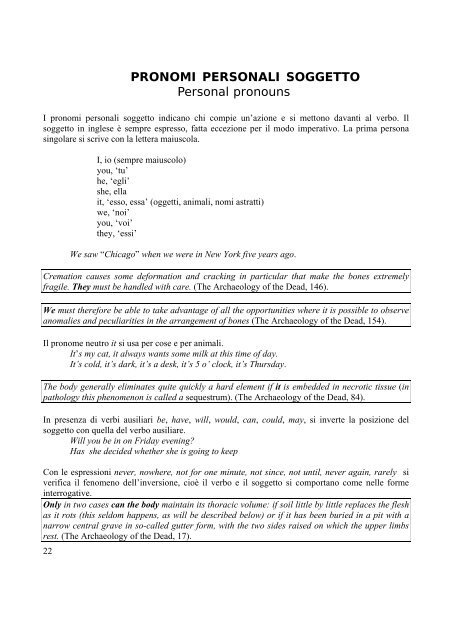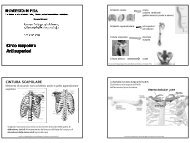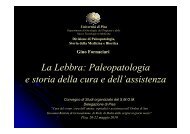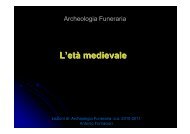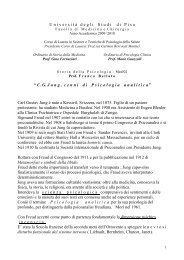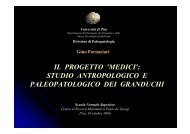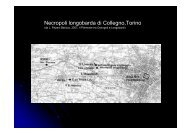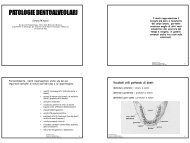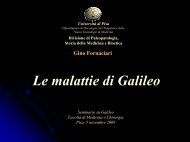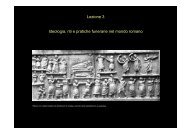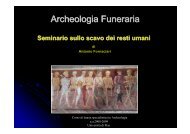Fondamenti della lingua inglese Laura Cignoni - Paleopatologia
Fondamenti della lingua inglese Laura Cignoni - Paleopatologia
Fondamenti della lingua inglese Laura Cignoni - Paleopatologia
Create successful ePaper yourself
Turn your PDF publications into a flip-book with our unique Google optimized e-Paper software.
22<br />
PRONOMI PERSONALI SOGGETTO<br />
Personal pronouns<br />
I pronomi personali soggetto indicano chi compie un’azione e si mettono davanti al verbo. Il<br />
soggetto in <strong>inglese</strong> è sempre espresso, fatta eccezione per il modo imperativo. La prima persona<br />
singolare si scrive con la lettera maiuscola.<br />
I, io (sempre maiuscolo)<br />
you, ‘tu’<br />
he, ‘egli’<br />
she, ella<br />
it, ‘esso, essa’ (oggetti, animali, nomi astratti)<br />
we, ‘noi’<br />
you, ‘voi’<br />
they, ‘essi’<br />
We saw “Chicago” when we were in New York five years ago.<br />
Cremation causes some deformation and cracking in particular that make the bones extremely<br />
fragile. They must be handled with care. (The Archaeology of the Dead, 146).<br />
We must therefore be able to take advantage of all the opportunities where it is possible to observe<br />
anomalies and peculiarities in the arrangement of bones (The Archaeology of the Dead, 154).<br />
Il pronome neutro it si usa per cose e per animali.<br />
It’s my cat, it always wants some milk at this time of day.<br />
It’s cold, it’s dark, it’s a desk, it’s 5 o’ clock, it’s Thursday.<br />
The body generally eliminates quite quickly a hard element if it is embedded in necrotic tissue (in<br />
pathology this phenomenon is called a sequestrum). (The Archaeology of the Dead, 84).<br />
In presenza di verbi ausiliari be, have, will, would, can, could, may, si inverte la posizione del<br />
soggetto con quella del verbo ausiliare.<br />
Will you be in on Friday evening?<br />
Has she decided whether she is going to keep<br />
Con le espressioni never, nowhere, not for one minute, not since, not until, never again, rarely si<br />
verifica il fenomeno dell’inversione, cioè il verbo e il soggetto si comportano come nelle forme<br />
interrogative.<br />
Only in two cases can the body maintain its thoracic volume: if soil little by little replaces the flesh<br />
as it rots (this seldom happens, as will be described below) or if it has been buried in a pit with a<br />
narrow central grave in so-called gutter form, with the two sides raised on which the upper limbs<br />
rest. (The Archaeology of the Dead, 17).


